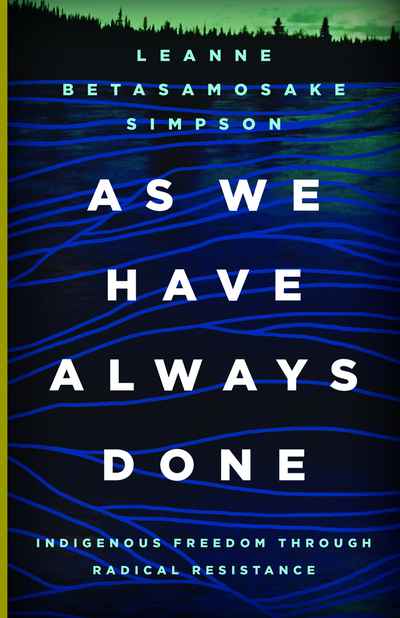

As understood in this book, resurgence "is a flight out of the structure of settler colonialism and into the processes and relationships of freedom and self-determination encoded and practiced within Nishnaabewin or grounded normativity" (17). Simpson argues, "the intellectual and theoretical home of resurgence had to come from within Indigenous thought systems, intelligence systems that are continually generated in relationship to place" (16).

They key to resurgence, the book argues, lies in "the brilliance and complexity of Nishnaabeg embodied thought" learned from Elders and the land through traditional pedagogies, and that must be the emphasis of Indigenous resurgence. But the seeds of the whole, the core, the basis for living otherwise, for theorizing the world in an Indigenous way and for refusing colonization in an Indigenous way, remain vital and alive. Centuries of colonial violence and, in the case of the author's territories in Ontario, massive and growing settler intervention in the landscape mean that it cannot be lived in quite the same way as in years gone by. The premise for this work, at least as far as I am able to understand it from my external vantage, is the persistence of the integrated material cluster of lifeways, land, stories, logics, relationships, ceremonies, systems of perception and meaning and knowledge, and ways of organizing communities and lives that constitute, in a very practical and bottom-up sense, Indigenous nations. It builds from her earlier book Dancing On Our Turtle's Back – which I read and reviewed last year – and outlines a comprehensive vision, grounded in Nishnaabeg thought but relevant to other Indigenous nations as well, for radical resurgence. This book is written by Michi Saagiig Nishnaabeg scholar, writer, and artist Leanne Betasamosake Simpson. So given that, how do I read? What can I learn? How should I listen? Not that this book discourages anyone from reading who is willing to approach it in a spirit of respectful engagement, but it is also very clear about who it is written to and for.

It's always a relevant question, but I feel it particularly keenly in instances like this book, where it's 100% clear that the book is not in any way addressed to me. How to read from somewhere – and from where I am in particular – is an ongoing preoccupation in the reviews on this site.


 0 kommentar(er)
0 kommentar(er)
